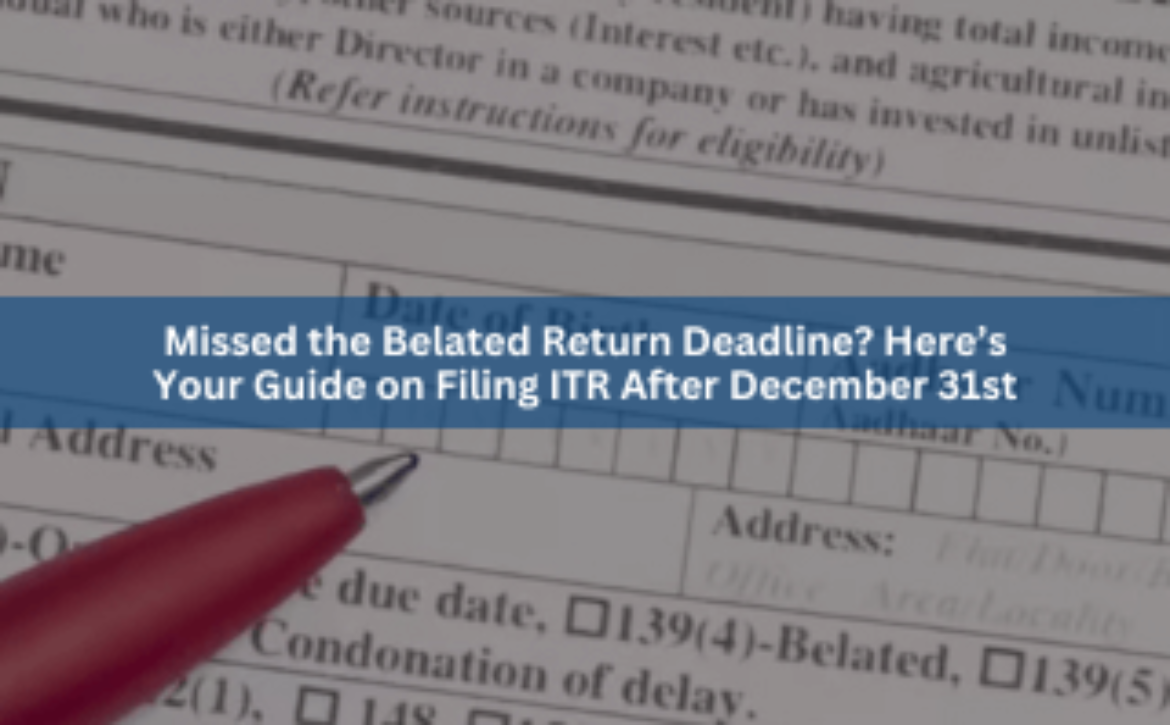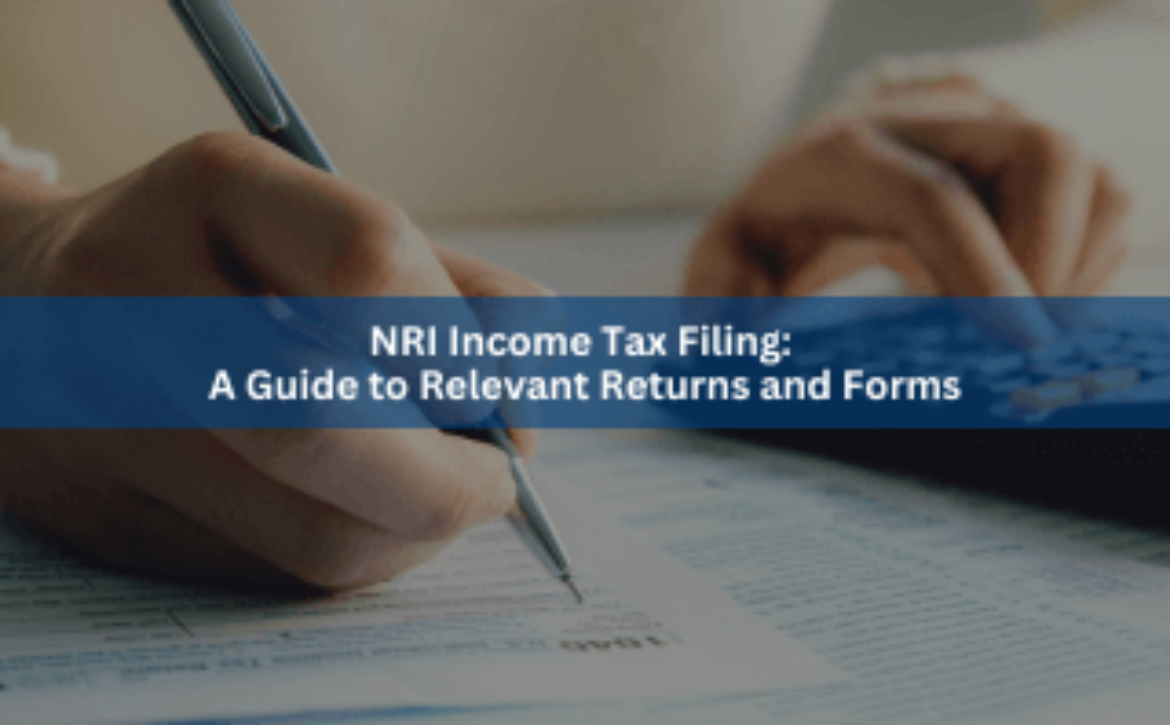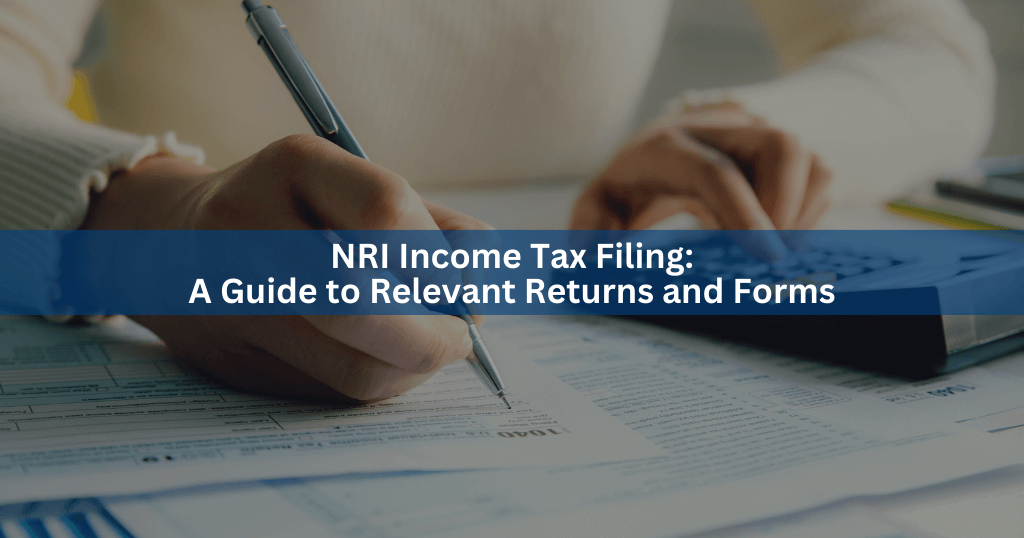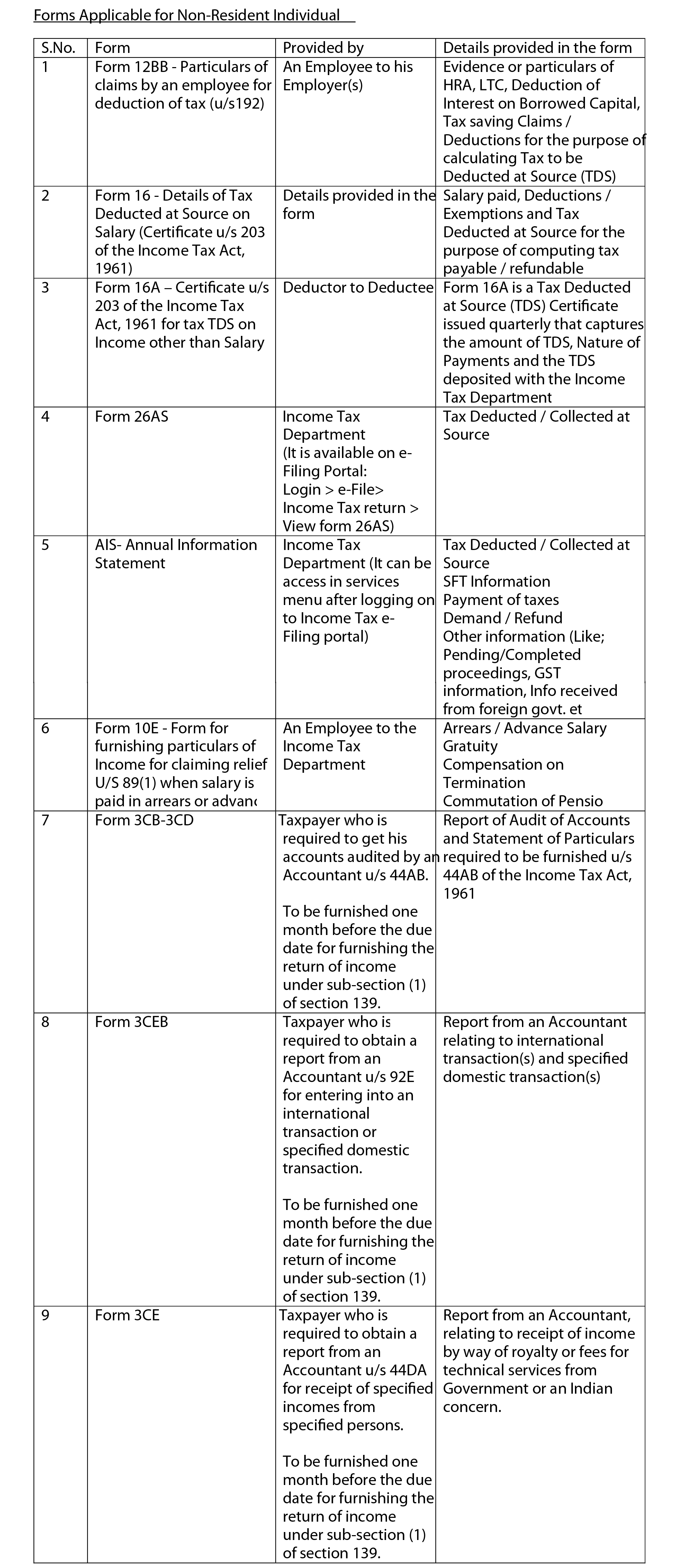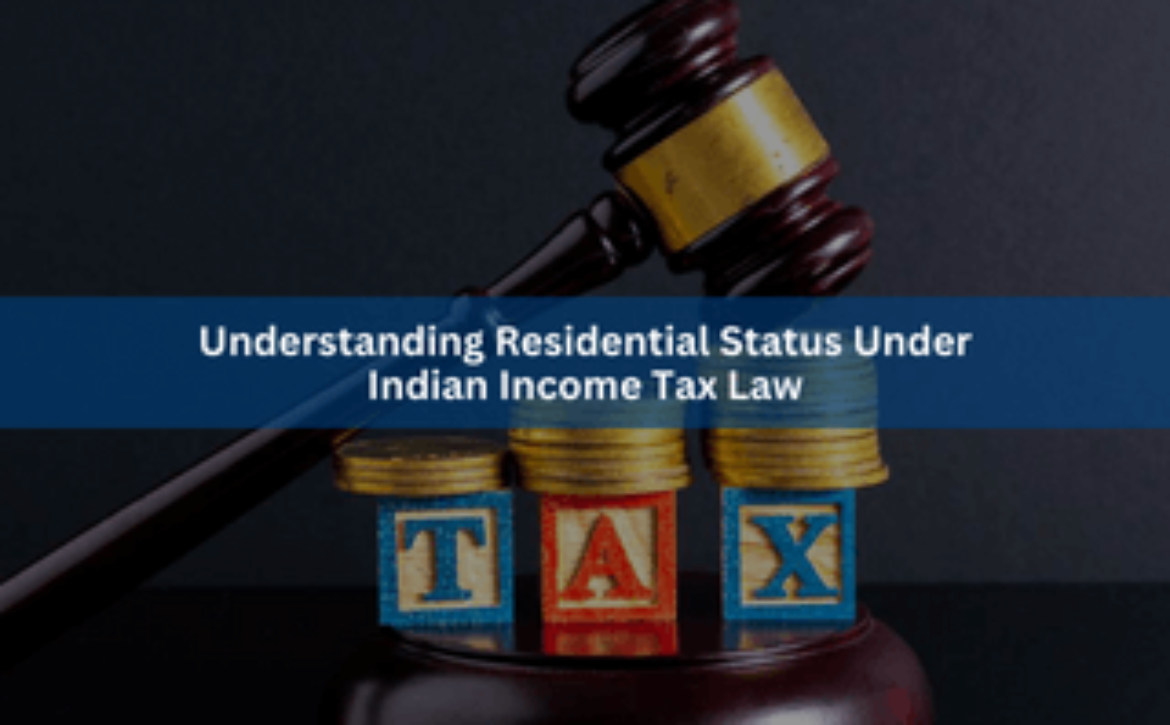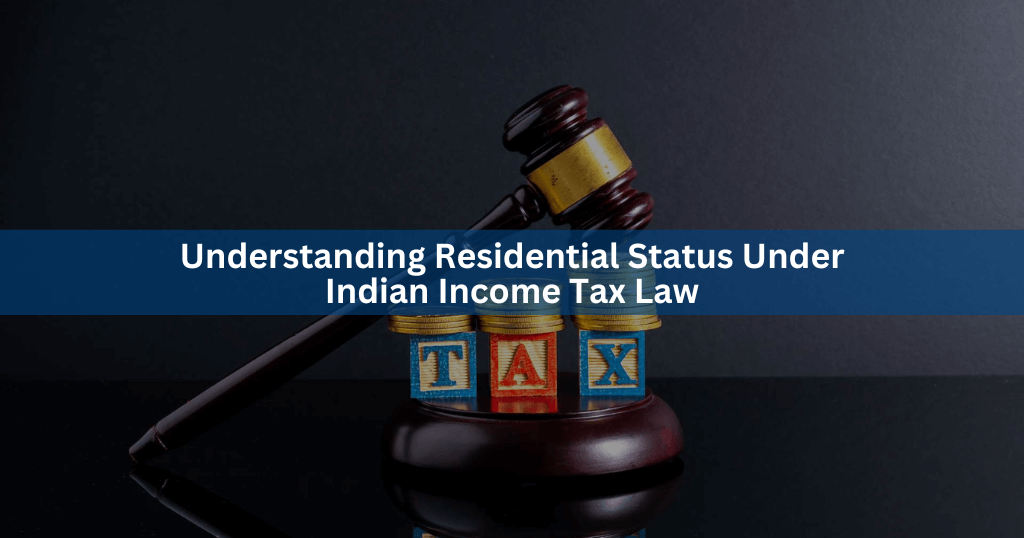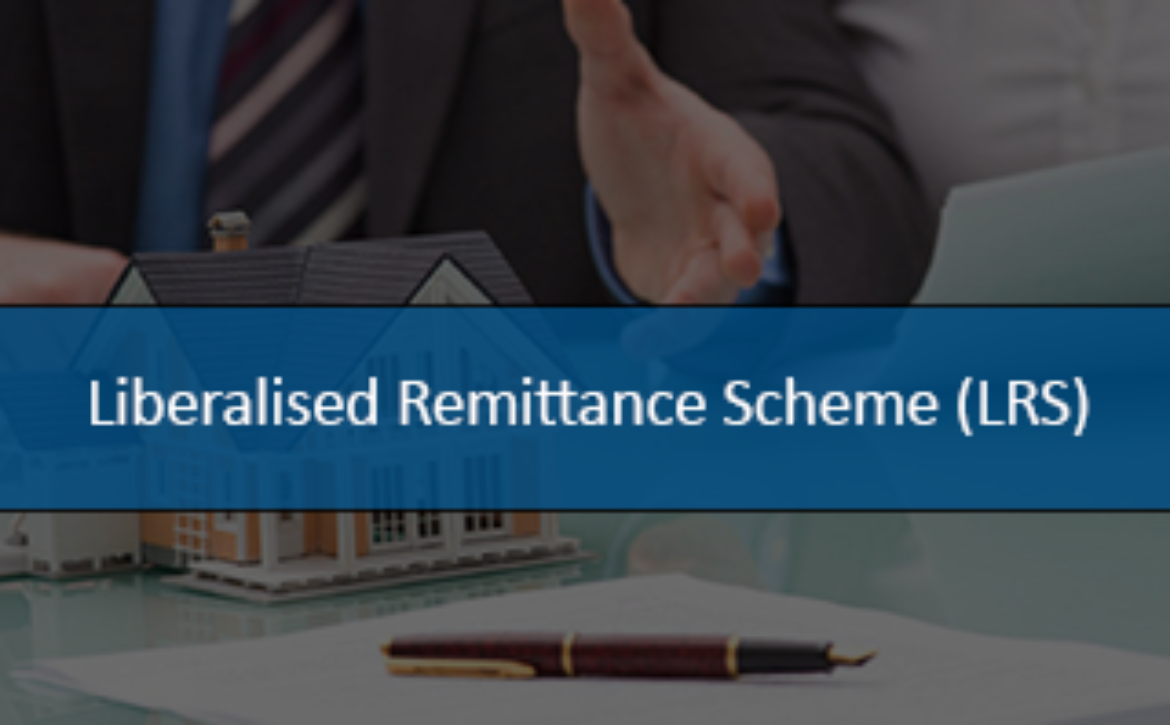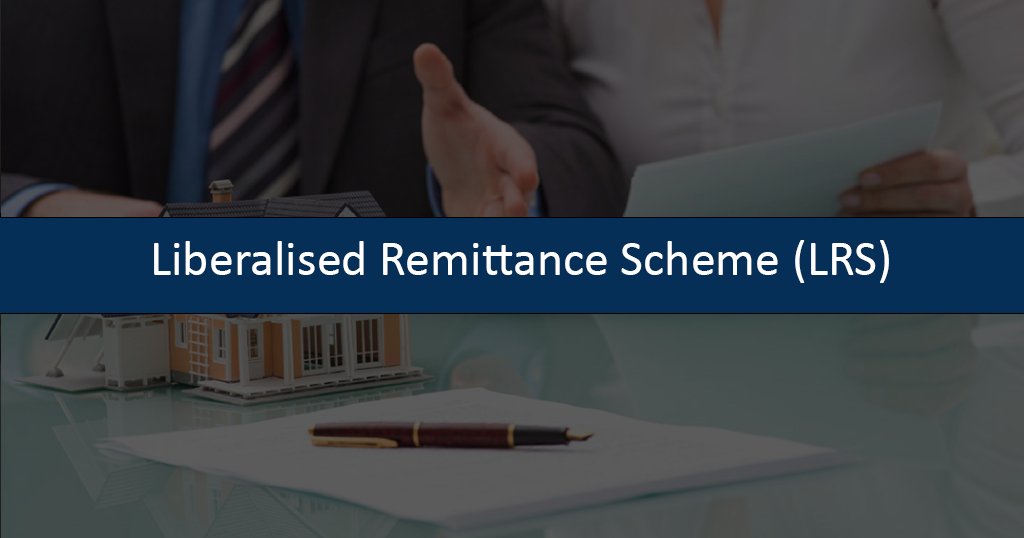Missed the Belated Return Deadline? Here’s Your Guide on Filing ITR After December 31st
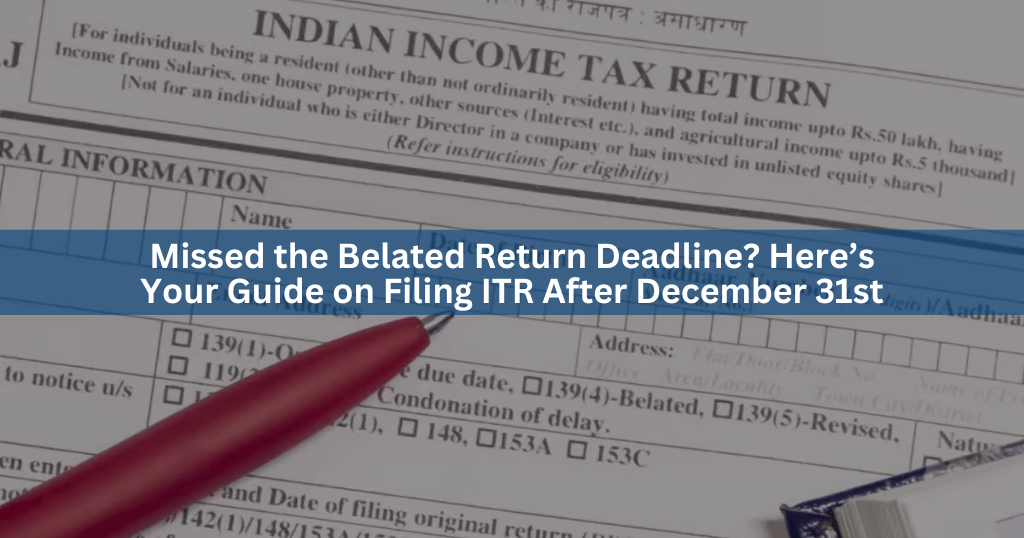
Missed the Belated Return Deadline? Here’s Your Guide on Filing ITR After December 31st
Introduction:
As the repercussions of the recently passed Belated Income Tax Return deadline continue to be felt, there’s a silver lining for those who failed to meet the initial cutoff. The prospect of redemption presents itself in the shape of the Revised Income Tax Return, affectionately referred to as ITR-U. This blog strives to act as your guide through the intricate terrain of tax filing, offering a detailed understanding of the purpose, eligibility prerequisites, and a systematic, step-by-step approach to submitting an ITR-U.
Understanding ITR-U: Let’s decode the acronym. ITR-U, or the Updated Income Tax Return, is your ticket to rectify any errors or omissions made during the initial filing process. You have a window of two years from the end of the financial year, extending until March 31, 2026, to set things right. However, it’s crucial to note that ITR-U comes with some constraints; taxpayers cannot reduce income, claim refunds, increase losses, or introduce new losses during this process.
Who Can File ITR-U?
- The eligibility criteria for ITR-U extend to anyone who stumbled upon errors or omissions in their original, revised, or belated tax returns. It serves as a safety net, allowing individuals to correct inadvertent mistakes.
- Any taxpayer can file an updated return u/s 139 (8A) whether he has furnished/not furnished an original return.

Who is Not Eligible to File ITR-U? Not everyone can ride the ITR-U wave. The following scenarios deem ITR-U inapplicable:
- If an Updated Return has already been filed.
- For those seeking tax refunds.
- Individuals filing a NIL ITR.
- When filing an updated return results in reduced income tax liability.
How to File ITR-U Form:
Download the Relevant ITR Form:
Fill in the Details:
Compute Tax Liability:
Pay Pending Taxes:
File the ITR Form:
Verify the ITR:
Conclusion:
Submitting an ITR-U can serve as your guiding light in case you’ve overlooked the extended deadline. Navigating the complex terrain of tax obligations, it’s crucial to recognize that filing ahead of the deadline is the optimal approach. Taking a proactive stance in managing your financial responsibilities not only ensures compliance but, more importantly, provides tranquility. Stay well-informed and stay proactive for a peace of mind.

